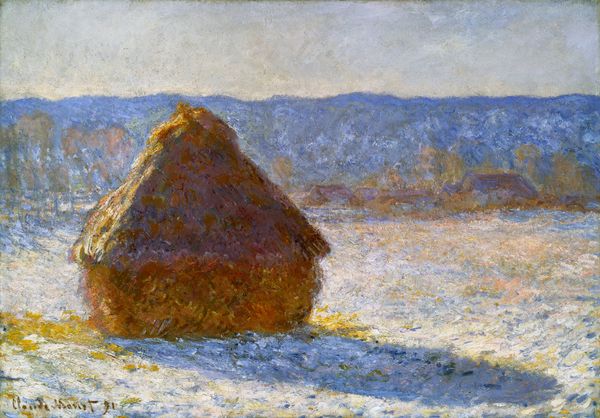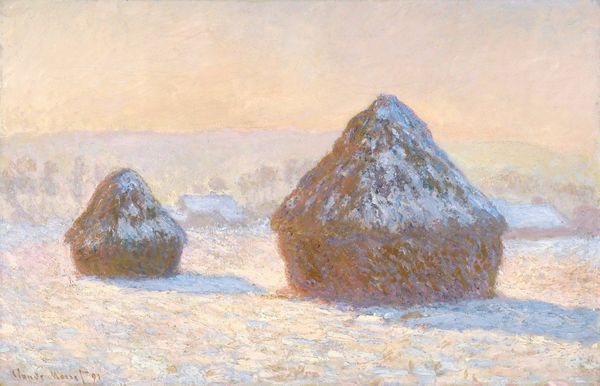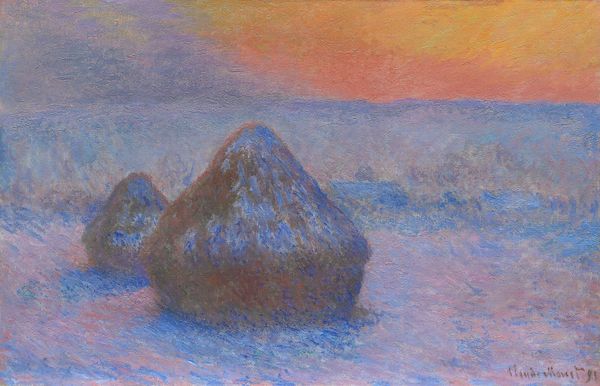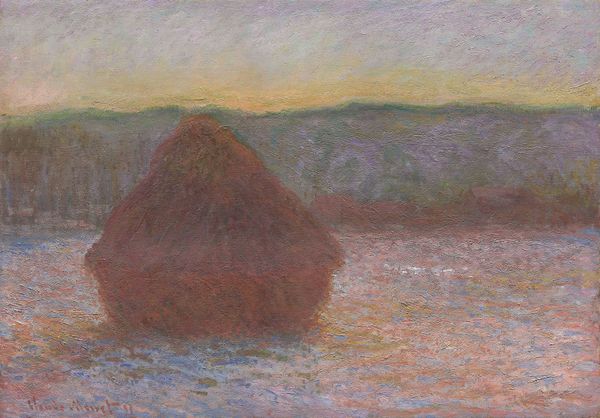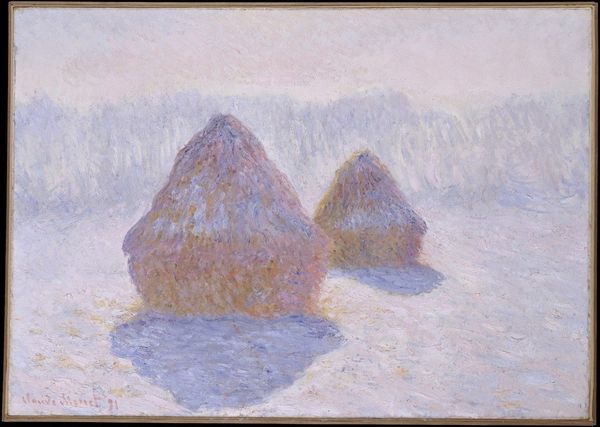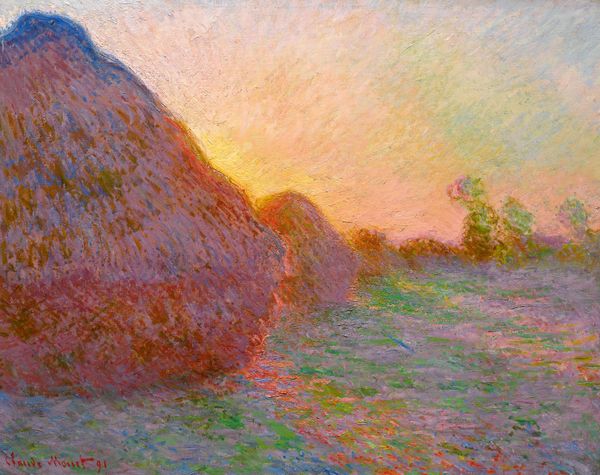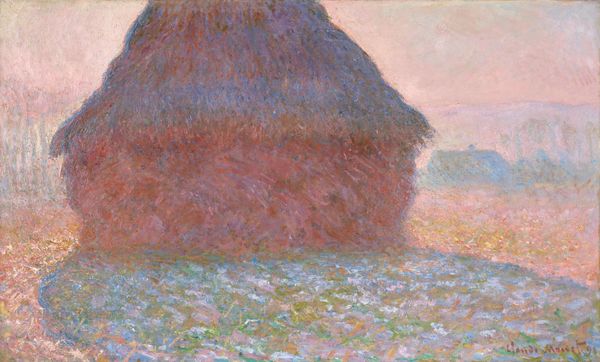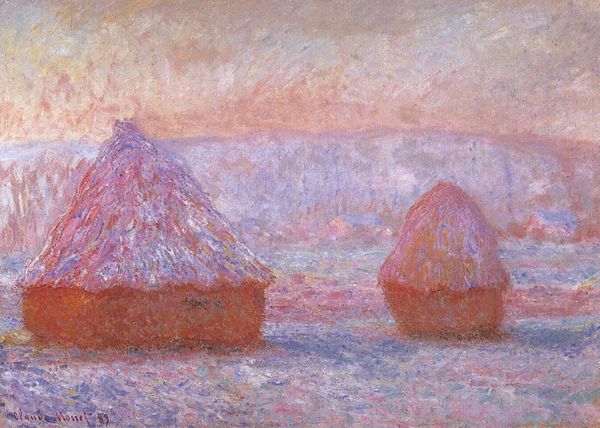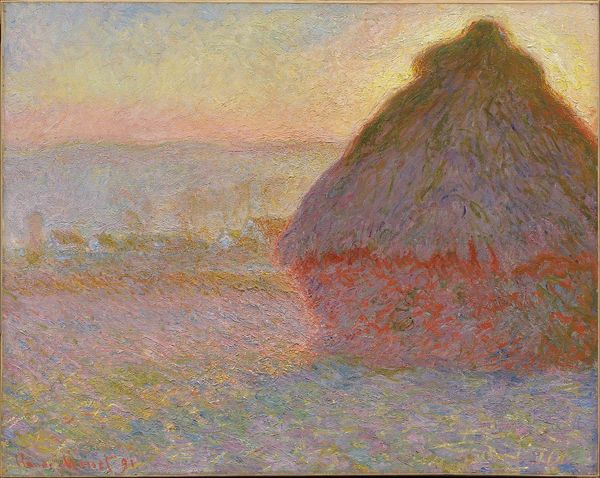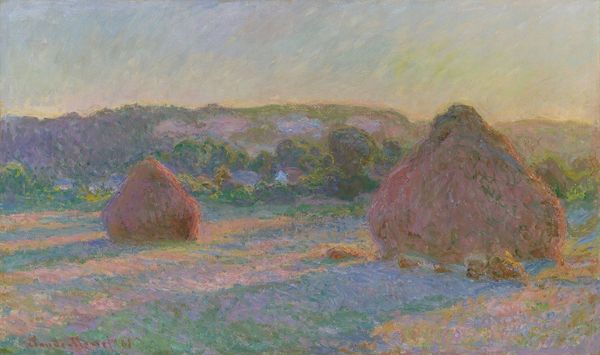
Dimensions: 66 x 93 cm
Copyright: Public domain
Curator: Here we have Claude Monet's "Stack of Wheat (Snow Effect, Overcast Day)", painted in 1891. It's currently held at the Art Institute of Chicago. What are your first thoughts on this snowy landscape? Editor: It’s remarkably tactile; I can almost feel the roughness of the haystack and the granular quality of the snow under my fingertips. There's a subdued quality to it, and even a sense of quiet, isolated labor implied. Curator: Indeed. These haystacks were painted near Monet's home in Giverny. The series, painted en plein air, demonstrates the artist's fascination with capturing light and atmosphere, as well as changing socio-economic conditions through their display in galleries. What seems mundane—the stack of wheat—became the subject of intense artistic investigation and, ultimately, capitalist exchange. Editor: Absolutely, and let’s consider what a haystack *is*: tightly packed, harvested material, evidence of agricultural labor transformed into something of value, both materially and, in Monet's hand, artistically. The painting speaks to the transition from rural, agricultural life toward a market-driven economy and its representation within art institutions. Note the heavy layering of the oil paint. Monet isn't just representing the haystack; he's constructing a textural object of value, echoing its material reality. Curator: The impressionistic brushstrokes, the cool color palette—whites, blues, lavenders—certainly evoke the feeling of a cold, overcast day, while speaking to Monet’s innovative method. The art market craved these kinds of snapshots. Editor: Right. It's important to consider how Impressionism, as a movement, altered the dynamics between artist, artwork, and patron. Monet elevated humble subject matter using the labor of his technique. There’s almost a perverse quality to this in the way the canvas replicates in aesthetic form what exists materially through nature’s harvesting cycles. The transformation of natural materials is doubled, mirrored. Curator: So, as we stand here today, "Stack of Wheat" serves not just as an atmospheric rendering but also as a commentary on the socio-economic shift of late 19th century France. Editor: And the very real materiality behind idealized aesthetics, making us question the artist's labor as being distinct or intrinsically removed from, for instance, the farmhand who might be passingly seen gathering the hay into its initial and rudimentary form.
Comments
No comments
Be the first to comment and join the conversation on the ultimate creative platform.
